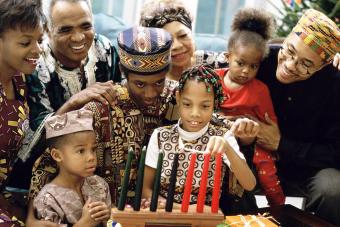
Picture books in 3rd person are the most frequent form for these popular books for preschoolers and elementary-age kids. They tell a story from the point of view of an omniscient story teller or narrator. The narrator, who knows all, tells us what has happened, is happening, or what might happen. The narrator can even get inside the heads of the characters in the story and tell us what they are thinking.
Award Winning Picture Books in 3rd Person
Many award-winning picture books are written in third person. You can pick from both old and new award winners:
- Red Sings from Treetops: A Year in Colors - a 2010 Caldecott Honor Book by Joyce Sidman that deals with color concepts by how they are reflected in seasons of the year
- Frog and Toad Are Friends - a beginning reader by Arthur Lobel
- Always Room for One More - a tale derived from a traditional Scottish folk song retold by Sorche Nic Leodhas
- The Three Pigs - a version of "The Three Little Pigs" with some new twists
- Marshmallow - a story by Clare Turlay Newberry about how the family cat Oliver came to be friends with Marshmallow, the bunny
Concept Books
Books that teach a concept are very popular for preschoolers and children in the primary grades. A couple of entertaining concept books in third person follow:
- The Foot Book: Dr. Seuss's Wacky Book of Opposites - a book of opposites written in Dr. Seuss's usual nonsensical narrative prose
- When Sheep Cannot Sleep - a counting book that casts a new light on the idea of counting sheep
Fairy Tales, Fables, and Folktales
Most fairy tales, folk tales, and tall tales are retold in third person. Many of these traditional stories are retold in picture books in 3rd person. Here are some examples of nicely illustrated, traditional stories told from this perspective:
- Cinderella - richly illustrated by K. Y. Craft with detailed pictures in the styles of 17th and 18th century France
- Grandma Chickenlegs - a lively retelling of a Russian fairy tale by Geraldine McCaughrean, featuring the witch with chicken legs, Baba Yaga
- Johnny Appleseed - written by Reeve Lindbergh and illustrated by Kathy Jakobsen with detailed paintings in American primitive style
- Paul Bunyan - told by Esther Shephard in country vernacular and illustrated by Rockwell Kent, an early American modernist
- Snow White and the Seven Dwarfs - a Caldecott Honor Book retold by Myriam Deru and illustrated by Nancy Ekholm Burkert with lovely, delicate pictures
Just for Fun
Some picture books in 3rd person are just good fun and don't fall into any special category. Here is a selection of books that most young children will enjoy and their parents will appreciate as they read them aloud:
- Mo Willems' series of Pigeon books, such as the original Don't Let the Pigeon Drive the Bus
- Six by Seuss - a collection of six popular stories by Dr. Seuss: And To Think That I Saw It On Mulberry Street, The 500 Hats of Bartholomew Cubbins, Horton Hatches the Egg, How the Grinch Stole Christmas, The Lorax, and Yertle the Turtle
- Tops and Bottoms - a Caldecott honor book by Janet Stevens about a lazy bear who makes a deal with a hare
Find Examples of 3rd Person Narratives
Picture books in 3rd person abound, and they offer many examples for young children learning to write third-person narrative for the first time. Third-person story-telling is the most common form in both oral and written story-telling tradition. This perspective lets the narrator embellish the story with his complete knowledge of all of the characters' thoughts and actions.







